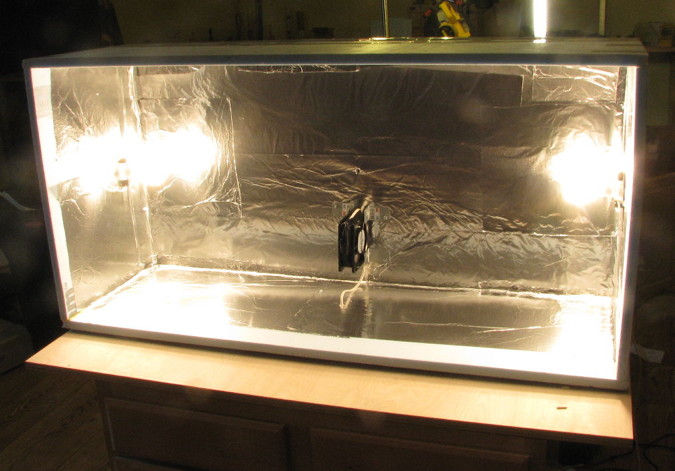Be careful about this. The fumes from heating could accelerate an eventual allergic reaction to epoxy. Same reason why you never want to get it on your skin.
To me, the ONLY good reason to warm up epoxy before mixing is if it is crystallized or become too thick to pour, and you have no other option at the time to use it (or wait till you can get more). But once you know that, you really ought to line up getting some more, not keep using it.
I have never done that, BTW. I get newer epoxy. Last fall I did have a bottle that was very thick to the point it would not pour worth a darn. Needed to do the build that night. I took the top off and used a dowel to help pull-scrape the nearly jelly epoxy out, and fortuantely when I mixed in the other part, that other part made the very thick epoxy thin out so that it mixed properly. And I was able to complete the build. But for one, it was not for a critical strength project (I was building a paint spray booth), as I would not have trusted that for a model or other project that needed high-strength gluing. And for the other, within days I got some new epoxy to replace the old jellied stuff.
Pre-warming for the sake of making it simply cure faster risks having it start to cure too soon, and still does nothing to achieve the final cure when in a too-cool / cold place.
The better way is to mix it up without warming it, get the job done, THEN put the model in a warm place to accelerate the cure.
Indeed in let's say a 55 degree workshop, even if the epoxy was pre-warmed, by the time the epoxy is applied to the model, it is thinned out so much that it is cooled back to room temperature and will have much the same problem with not curing well since it is too thin (thickness, bulk, not viscosity) to generate a good exothermic reaction at a low temperature.
What I use is a home made "Hot Box". I built it out of blue foam. It uses a couple of incandescent light bulbs inside to produce heat. And a computer "puck" cooling fan to circulate the air to make the temperature uniform inside. It can get as hot as 147 degrees. If I want it not as hot I unscrew one bulb or put a shim of wood under one of the bottom edges to allow a bit of leakage, and check the indoor/outdoor thermometer (sensor is on a wire inside the box) to monitor the temperature. Works great.
Link to a previous post about it, with more pics:
https://www.rocketryforum.com/showthread.php?63213-Parts-for-Arduino-based-Oven&p=673169#post673169
Another thing I did before I made that, was to use an old Trunk, 30" long, with an electric Heating Pad inside of it. I used that to help speed the cure of FAI 40mm fiberglass body tubes. But that was not big enough or convenient when I got into laying up vac-bagged composite wings for R/C Rocket Boosted Gliders (Epoxy with a 60 minute working time, with some heating almost mandatory for a good cure and maximum strength/stiffness). So I made the hot box to be big enough for those needs, 48" long, 24" wide, 18" tall. Could have been made longer/bigger of course.
The other option is that once you are done, just take the model out of the cold workshop and put it into a warmer place inside the house. I like to keep the bathroom extra warm so I'm not chilled during/after showering, so that is where I used to put a model that was using epoxy needing a 24 hour cure. And I still use that approach for when I have a new RTV casting mold, as the hot box would get it so warm that it could promote shrinkage of the RTV mold.
- George Gassaway





